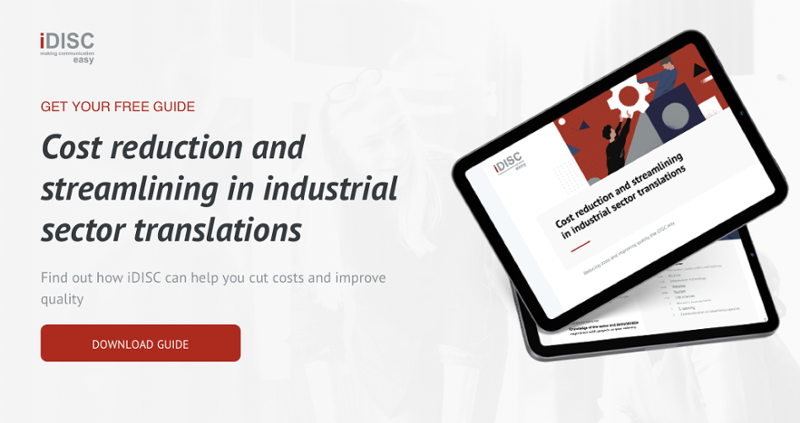When it comes to successfully marketing a product in other countries, you know that good communication with your company’s potential customers and stakeholders makes all the difference. When you are not based in the target market, or are lacking local offices or salespeople, the way to start communicating here is through a website, your company’s blog and social networks.
In this article we are going to focus on exactly that, the role of a blog. This is our main tool to attract traffic, that is, to attract a greater number of users who could become customers.
Blogs are aimed at achieving better positioning online, which means making our company appear among the first search results when users enter terms related to our products or services.
To do this, we must set out an SEO and content strategy that supports our work on the blog.
The most complex part when implementing this strategy might be the study done beforehand on the keywords and topics of interest for our specific target market.
Failure to properly apply this study when translating our blog into the different languages and cultures we are targeting can undermine the effectiveness of the strategy.
You may be asking yourself some of the following questions:
- Why is it so important to connect with users through their native language?
- What is the first step when translating a blog?
- How can I have a multilingual blog?
- How do I optimize my blog with international SEO in mind?
Stick around and we’ll tell you all about it in this article!
Why translate a blog
A company’s blog is a powerful marketing tool for generating sales. It functions as a direct communication platform with users and boosts customer acquisition and loyalty, so translating it is much more important than is often believed.
Communicating our products and services to potential customers in their own language will have a positive impact on conversion and sales.
On the other hand, a multilingual blog also helps to create a relationship of trust with users, offering them interesting content suited to their culture and language.
A multilingual blog needs to include a good international SEO strategy and content that will make us reach the right people and offer them the content they are looking for, at the right time. This way we will get our target audience to choose us over our competitors and we will be able to build customer loyalty.
Translating a blog opens doors to other markets and is highly profitable in the long run.
Advantages of a multilingual blog
Think about how many people from other countries may be interested in the content you offer in your blog’s source language. Translating a blog helps us to reach them because of course the language they use to search is different, although the topic engaging them is the same.
Positioning your blog in several languages can double or triple the traffic you receive on your website, offering the following advantages:
- You will be able to reach more people.
- Your company will be more credible and trusted: a multilingual blog allows you to communicate fluently with potential customers in different markets.
- You will reach more potential customers that fit your target even if they are not from your local market, overcoming physical and language barriers.
- You will be able to position yourself in different countries.
After having seen the advantages of having a multilingual blog, let’s talk about what to consider when translating a blog.
What do we need to consider when translating a blog?
When translating a blog you should consider several factors:
- Research the languages you want to target with your multilingual blog to have an impact on the right markets.
- Mold your strategy with your CMS in mind.
- Think about doing SEO translation for your keywords.
- Create interesting content that can capture the attention of different audiences and markets.
Some other more specific elements that you should consider include:
- Headlines: in addition to being eye-catching, headlines must contain the main keywords we want to position. When we have our blog in several languages, these words have to fit culturally; a literal translation is not enough.
- Metadata and URL: these also help to position the keywords we pick because visiting a website with a link in another language will not be fully trusted by users and will not provide them with information. Metadescriptions and other metadata are also very important for SEO and user experience.
- Non-visible text: image texts, alternative texts, image headlines or other elements such as Call To Action prompts or CTA, also help to improve positioning and provide information to users, so they need to be translated and adapted to each language.
- Tags: they need to be translated into the target language and they are used for grouping related content. This makes it easier to browse our blog’s multimedia content.
- Interlinking: interlinking involves adding links to other related pages of your site on your webpages and blogs. This encourages users to visit more webpages. For this strategy to work on your multilingual blog, links must be translated or match the page of the appropriate language version.
- Keywords: as we have already seen, they are the foundation of the whole SEO translation strategy. We need to look for the most convenient keywords to position our blog in each of the markets and languages.

Translating a blog: where to start
There are a variety of plugins and tools that can help you translate a blog or website. However, the best option is to have some prior knowledge in order to use them the right way and not hurt our multilingual blog’s positioning. It is also possible that some solutions may not meet your project goals.
Also, when translating a blog, we need to think about the type of CMS we want to use beforehand. A CMS is an online content management system that allows you to host a website or blog and manage its content easily and quickly. Two of the most popular CMSs are WordPress and HubSpot.
As you can see, there are many aspects that must be taken into account when translating a blog, which is why iDISC, a professional translation agency, is here to help you. We are website translation and localization experts.
We hope you found this article useful. You will find tons of more interesting content on our blog.




